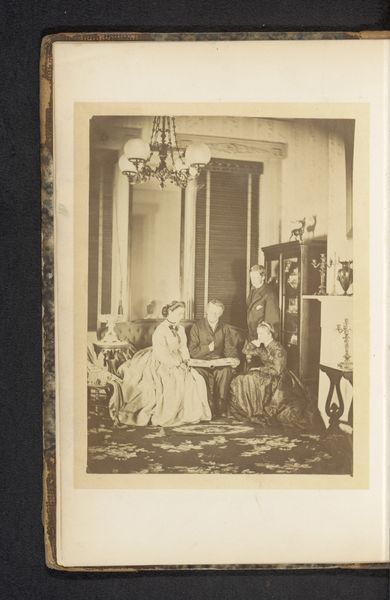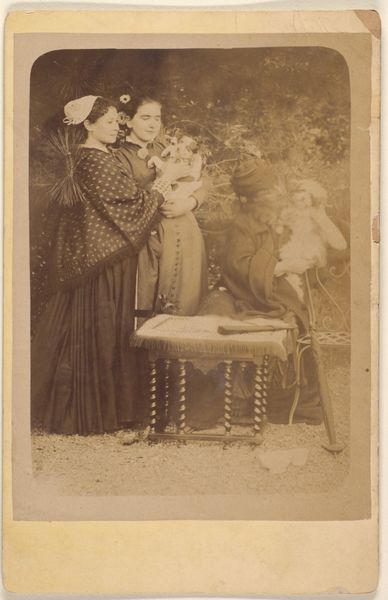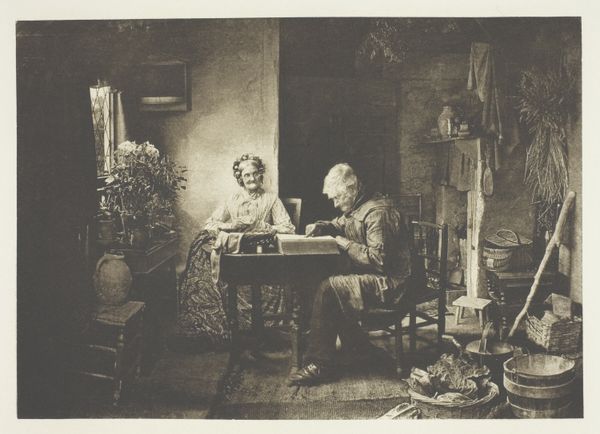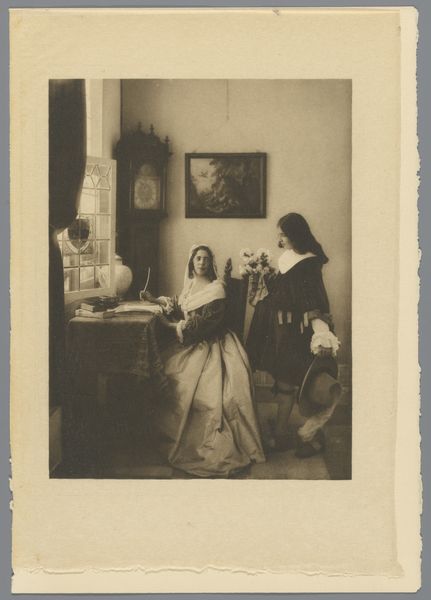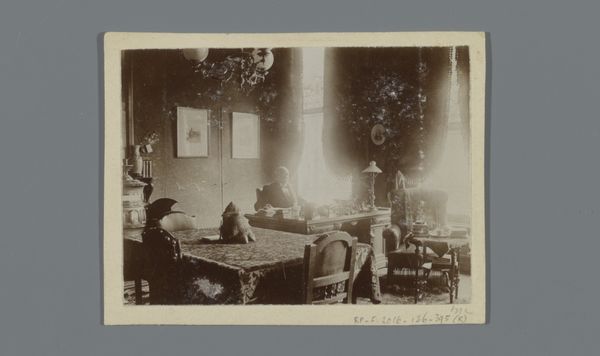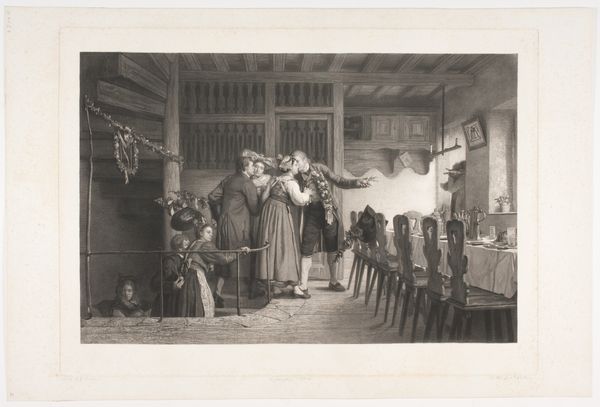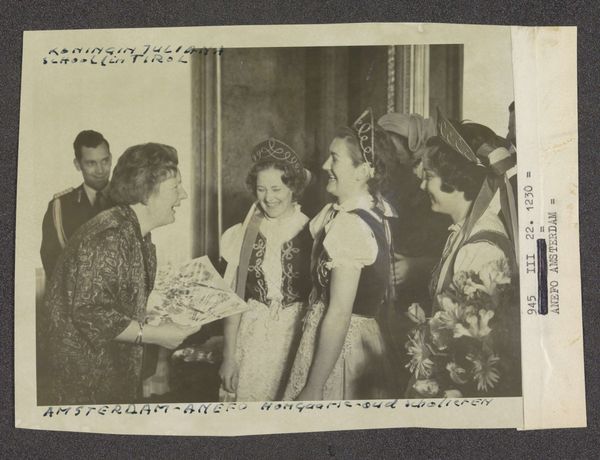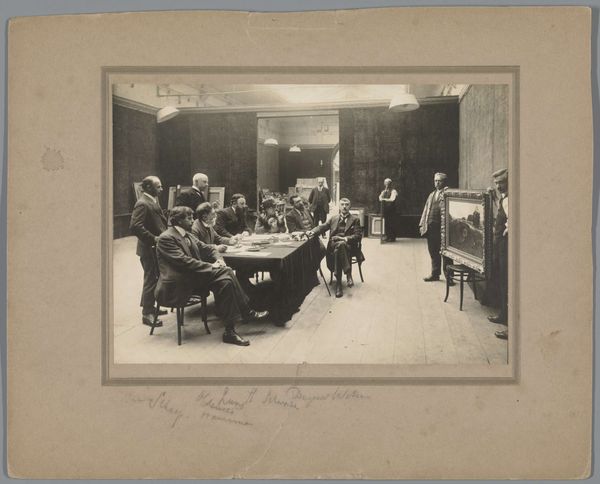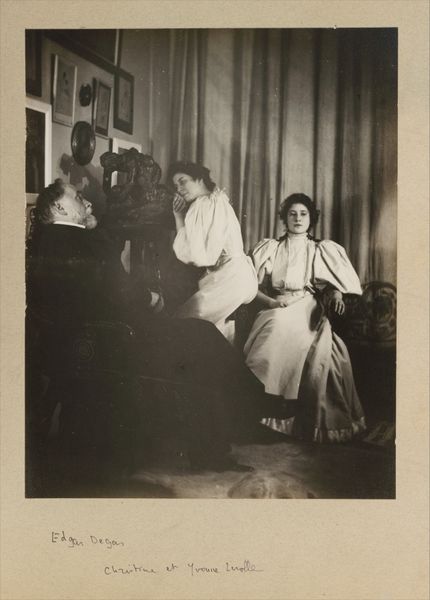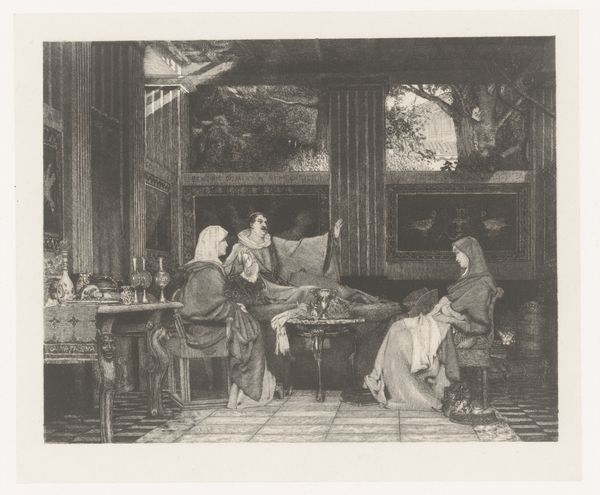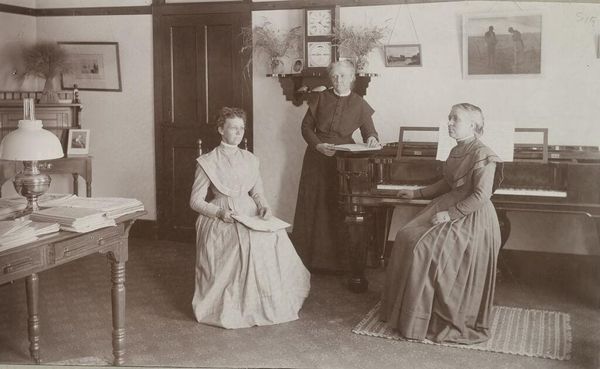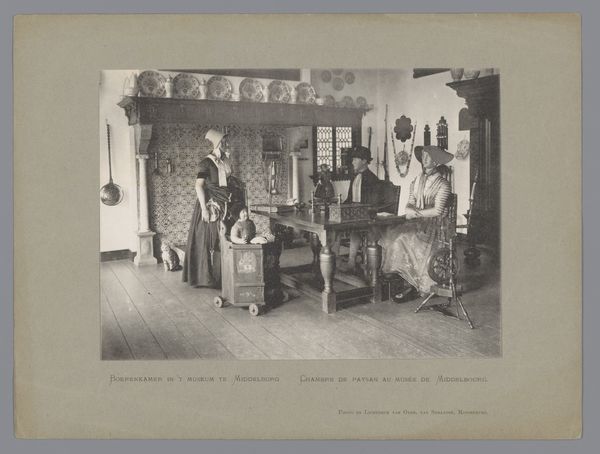![[Madame Bardey, Rodin and Henriette, 31 Rue Campagne-Premiere, Paris] by Eugène Druet](/_next/image?url=https%3A%2F%2Fd2w8kbdekdi1gv.cloudfront.net%2FeyJidWNrZXQiOiAiYXJ0ZXJhLWltYWdlcy1idWNrZXQiLCAia2V5IjogImFydHdvcmtzLzllNzBmYWI2LTVlNmItNDQ1NS1iM2RhLTI5ODY5MTYzMWRkYS85ZTcwZmFiNi01ZTZiLTQ0NTUtYjNkYS0yOTg2OTE2MzFkZGFfZnVsbC5qcGciLCAiZWRpdHMiOiB7InJlc2l6ZSI6IHsid2lkdGgiOiAxOTIwLCAiaGVpZ2h0IjogMTkyMCwgImZpdCI6ICJpbnNpZGUifX19&w=3840&q=75)
[Madame Bardey, Rodin and Henriette, 31 Rue Campagne-Premiere, Paris] 1915 - 1916
0:00
0:00
Dimensions: Image: 4 5/8 × 6 7/8 in. (11.8 × 17.4 cm)
Copyright: Public Domain
Curator: At the Metropolitan Museum of Art, we find Eugène Druet’s gelatin silver print, "[Madame Bardey, Rodin and Henriette, 31 Rue Campagne-Premiere, Paris]" dating from between 1915 and 1916. What catches your eye? Editor: Immediately, the contrast of textures. The soft blur of the background plays against the sharper detail of the sculpture, creating a visual tension that’s very compelling. It gives me a certain introspective and intimate mood. Curator: Druet’s image offers a window into Rodin’s studio and practice. Here, Rodin, flanked by Madame Bardey and Henriette, seemingly at work on one of his sculptures. Note the subtle gradations within the monochrome. Editor: Absolutely. It’s almost like a play on realism and abstraction. Druet masterfully uses light to both reveal and conceal. He is toying with shape and form within the representational confines of the photograph. Curator: We should consider the context in which this photograph was taken. World War I was raging. Rodin, already an established master, continued his work. Photographs of artists at work reinforced their iconic status, offering a glimpse into their creative genius. Editor: Precisely, and that speaks volumes about how art and artist was consumed. The composition directs the gaze – from Bardey on the left, to the Rodin himself at work, the sculpture in focus and then to Henriette on the right. Its structured organization heightens its impact. Curator: Indeed. Druet's framing elevates a studio snapshot to a curated image that blends the mundane with the artistic, which, in and of itself, speaks to the changing art landscape in early twentieth century Europe. Editor: A fitting intersection, considering the photo also has a kind of soft yet imposing, candid-feeling. Curator: It invites reflection, I think, about what it meant to be an artist—and more so a celebrated artist—during a turbulent historical period. Editor: I agree, it's a great example of an artist, Druet, who not only documented art but also composed something of visual interest. A worthy capture indeed!
Comments
No comments
Be the first to comment and join the conversation on the ultimate creative platform.
